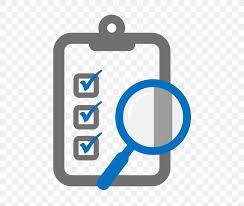Maximizing LinkedIn for Professional Brand Enhancement: A Strategic Framework
LinkedIn, with its over 700 million users, transcends a simple networking platform; it functions as a dynamic B2B marketplace and a crucial channel for professional brand building. This article presents a strategic framework encompassing fifteen key strategies for leveraging LinkedIn's potential, moving beyond mere profile presence to achieve impactful results. We will explore the application of marketing principles, social media strategies, and networking theories to optimize LinkedIn engagement for professional growth. Key concepts such as Search Engine Optimization (SEO), social capital theory, and the diffusion of innovations model will be incorporated throughout the analysis.
I. Foundational Strategies: Goal Setting and Profile Optimization
Before implementing tactical strategies, it is crucial to establish SMART (Specific, Measurable, Achievable, Relevant, Time-bound) goals. This provides a framework for measuring success and refining strategies. For instance, a marketing agency might aim to generate 50 qualified leads within a quarter, measured by conversion rates from LinkedIn engagement. This goal-setting aligns with the principles of strategic planning, focusing on outcomes and resource allocation.
The LinkedIn profile serves as a digital representation of one's professional brand. Optimization involves employing SEO principles. This includes strategically integrating relevant keywords—e.g., "digital marketing," "SEO specialist," "content strategy"—throughout the headline, summary, and experience sections to enhance search visibility. This directly applies the concepts of keyword research and search engine optimization, maximizing the discoverability of the profile within LinkedIn's internal search engine. A robust and complete profile establishes credibility and expertise according to social identity theory.
II. Active Engagement and Network Expansion
Leveraging LinkedIn Groups facilitates interaction with like-minded professionals. Active participation, responding to queries, and sharing insightful commentary builds social capital, strengthening professional relationships. For example, a software development firm could participate in groups focusing on Agile methodologies, showcasing expertise in project management. This aligns with social capital theory, emphasizing the value of network relationships. Creating high-quality, engaging content—articles, videos, infographics—is paramount, employing a content calendar to ensure consistent delivery. The content should resonate with the target audience, utilizing storytelling and showcasing value propositions, reflecting principles of inbound marketing.
Consistent engagement, including liking, commenting, and sharing content from connections, fosters stronger relationships and boosts visibility. This active participation strengthens networks and increases brand awareness according to the principles of relationship marketing. LinkedIn advertising, employing targeted campaigns using sponsored content, text ads, or dynamic ads focusing on specific demographics, interests, and job titles, further expands reach. A recruiting agency could utilize sponsored content to target specific skill sets, reflecting the principles of niche marketing.
III. Cultivating Authority and Expanding Reach
Thought leadership is established through consistent creation and dissemination of valuable content. Sharing insights, participating in industry discussions, and offering expert perspectives builds credibility, applying principles of content marketing. A cybersecurity consultant might author articles on emerging threats, establishing themselves as a subject matter expert. Strategic networking, connecting with and engaging influencers, amplifies reach and improves credibility, aligning with the concept of social influence within social media.
Showcasing successes through case studies and testimonials builds trust. A SaaS company might highlight client success stories illustrating the value of their software, applying principles of social proof and testimonials. Regular analysis of LinkedIn analytics—engagement rates, click-through rates, follower growth—provides data-driven insights for strategy refinement. A marketing manager might analyze content performance to optimize future efforts, implementing principles of marketing analytics and A/B testing.
IV. Advanced Strategies for Optimized Impact
Empowering employees to optimize their profiles and share company content dramatically expands brand visibility. An HR manager could conduct training sessions on LinkedIn best practices, improving employee engagement. Participation in LinkedIn Events—webinars, conferences—allows direct interaction with industry peers, enhancing brand presence. This strategy utilizes the principles of event marketing and relationship building.
LinkedIn Sales Navigator empowers B2B sales teams to identify and target potential leads using advanced search filters. A sales representative might leverage this tool to pinpoint key decision-makers, reflecting the principles of account-based marketing. LinkedIn Live enables real-time engagement through webinars or Q&A sessions, enhancing interaction. A business coach could utilize this to host live sessions, applying the principles of live streaming marketing. Competitive analysis is essential; monitoring competitor strategies reveals opportunities for improvement and innovation. A digital marketing agency could use this data to refine its content strategy, utilizing the principles of competitive intelligence.
Conclusion and Recommendations
This comprehensive framework illustrates how leveraging LinkedIn effectively requires a multi-faceted approach combining strategic planning, content marketing, social media engagement, and network building principles. By consistently implementing these strategies, professionals can cultivate a robust presence leading to increased brand visibility, enhanced professional reputation, and ultimately, business growth. Further research should focus on the long-term impact of these strategies on different professional fields and the correlation between specific LinkedIn engagement metrics and measurable business outcomes. The application of advanced analytics and predictive modeling techniques could provide further refinement of these strategies, creating highly personalized and optimized approaches.
Reader Pool:
What are your perspectives on the relative effectiveness of organic versus paid LinkedIn strategies in achieving specific professional goals?
```







No comments yet. Be the first to share your thoughts!